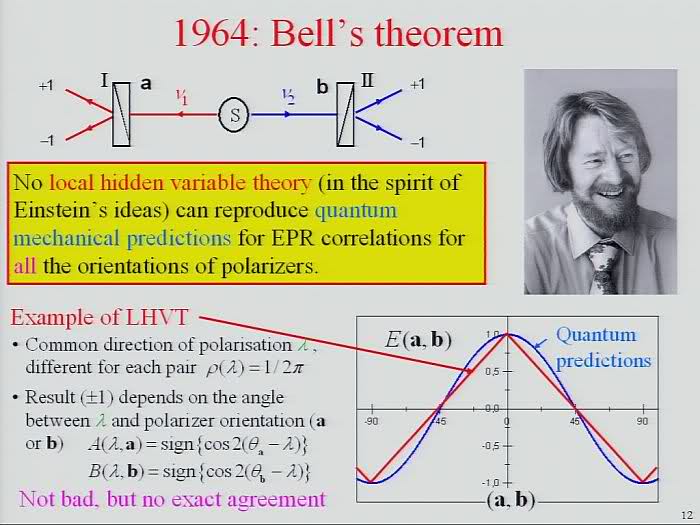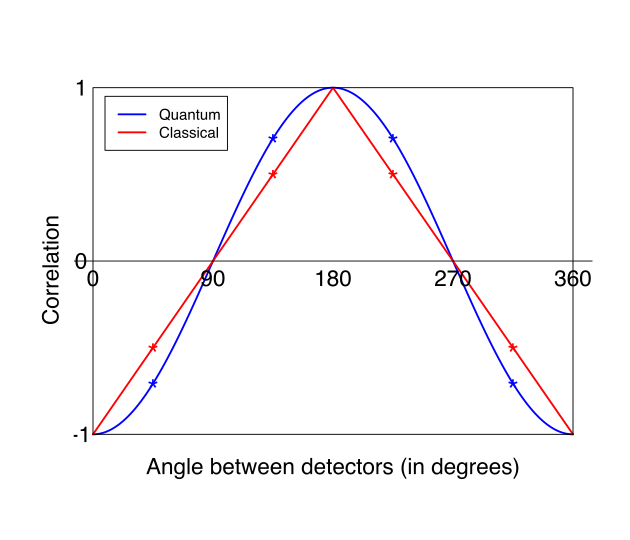Abstract
We present a deterministic yet nonlocal model—Structured Energy Chip Physics (SECP)—that reproduces the Bell/CHSH violations observed in quantum experiments without invoking superluminal signaling. In SECP, each particle is composed of an immense number of “chips” traveling at the speed of light, bound by a single global configuration rather than local hidden variables. Because these particles arise from a unified wave-like structure, measurement results across spacelike-separated detectors can exceed the classical |S| ≤ 2 limit up to the quantum bound |S| ≤ 2√2. This paper develops the argument for how nonlocal correlations—deemed impossible by local realism—naturally emerge from the collective chip arrangement that forms an entangled system. We reference the seminal peer-reviewed paper, At the Speed of Light: Toward a Quantum-Deterministic Description? (Silverberg, Eischen, and Whaley), which establishes the underlying SECP rules and shows how photons can emerge as standing cosine waves orbiting their center of mass along the direction of travel.

1. Introduction
The Bell/CHSH inequality and its experimental violation are cornerstones of modern quantum theory, demonstrating that local hidden-variable (LHV) explanations cannot account for strong correlations among entangled particles [1]. For a pair of particles measured at angles a,a′ and b,b′, local realism forces the CHSH combination:
S = ∣ E(a,b)+E(a,b′)+E(a′,b)−E(a′,b′) ∣ ≤ 2
where E(x,y) ∈ {−1,+1}. Quantum mechanics, however, predicts ∣S∣ ≤ 2, matching laboratory results that exceed 2 [2–4]. Thus, classical locality fails to describe these nonlocal correlations adequately.
While pilot-wave or Bohmian approaches show how hidden variables might survive if nonlocality is explicitly allowed, Structured Energy Chip Physics (SECP) offers a different deterministic wave-based sub-layer. As laid out in the seminal, peer-reviewed paper At the Speed of Light: Toward a Quantum-Deterministic Description? [5], SECP posits that:
- All subatomic “particles” form from vast ensembles of light-speed energy fragments (“chips”).
- The inverse-square interactions ensure chips can only change direction, not speed.
- Photons, for instance, are standing cosine wave orbits traveling along a center of mass at ccc.
Such an approach inherently encodes global, rather than local, constraints—ensuring entangled pairs cannot be decomposed into separate local states. This paper demonstrates how these constraints mechanistically yield Bell violations in a manner consistent with quantum experiments.
2. Bell’s Theorem and Nonlocal Correlations
2.1. Local Realism’s Failure
Bell’s theorem proves that if each measurement outcome is locally determined by hidden variables associated with each particle, then the set of correlations must obey the “∣S∣ ≤ 2” bound. Empirically, many photon-pair (and other entangled-pair) tests show ∣S∣ > 2. Hence, at least one assumption—local realism—must be false [1,2]. This does not necessarily require “messaging faster than light,” but it does entail nonlocal constraints across the entire system.
2.2. Quantum Exceeding 2
Standard quantum mechanics attributes these violations to a global wavefunction describing both particles at once, regardless of distance. If that wavefunction is maximally entangled (e.g., a singlet spin state or polarization analog), the correlation across certain measurement angles reaches up to ∣S∣= 2√2. No local hidden-variable theory can surpass 2, but quantum tests routinely do.
3. Structured Energy Chip Physics (SECP)
3.1. Deterministic Chips Traveling at ccc
The central hypothesis of SECP is that all fundamental particles are formed from an enormous population of chips traveling at speed ccc. In the photon’s case, as shown in [5], these chips organize into a cosine-wave orbit around a center of mass that also moves along the photon’s direction of travel. No single chip slows down or speeds up, but they can turn under an inverse-square interaction.
3.2. Global Arrangement vs. Local Hidden Variables
When a pair of photons is created in an entangled state, the two photons share a common origin in the chip distribution. Crucially, that distribution cannot be factored into “photon A’s chips” plus “photon B’s chips” independently, in the sense demanded by local realism. Instead, the entire two-photon system is a single wave arrangement with two emergent “standing waves,” each traveling near ccc. Thus, knowing the measurement outcome on photon A reveals constraints on the chips’ global wave structure, which in turn sets the probabilities (but not signals) for photon B’s outcome.
3.3. Mechanism of Bell Violations
In a Bell/CHSH test, Alice and Bob measure angles a/a′ and b/b′, each yielding ±1. Because the entire chip configuration is globally defined from inception, the joint measurement distribution can exhibit correlations beyond ∣S∣ = 2. This reproduces the known quantum curve −cos(Δθ) when analyzing spin or polarization angles. The essence: no superluminal signals appear, but the wave structure linking both photons from creation is inherently nonlocal.

This means that Structured Energy Chip Physics predicts the same blue curve above which is also predicted by Quantum Mechanics.
4. Argument Outline: How SECP Yields Nonlocal Correlations
- Unified Creation
- In an entangled-pair generation process, one wave (or “mother photon”) splits into two partial waves. The chip ensemble reconfigures into two stable cosines, each traveling at ccc.
- No Local Factorization
- A local hidden-variable approach would assign separate “instructions” to each photon. In SECP, the instructions are one global distribution of chips, making it impossible to label all outcomes as purely local ±1 from each photon side.
- Consistent with Minkowski Spacetime
- As argued in [5], Minkowski intervals are a natural averaging outcome when large ensembles all travel at speed ccc. This ties the sub-particle structure to special relativity, avoiding contradictions about FTL signals.
- Bell/CHSH Summation
- Summing correlations at (a,b), (a,b′), (a′,b), (a′,b′) can exceed 2 if the chip distribution is arranged so that any single measurement reveals part of the globally correlated wave. Exactly as quantum mechanics, the result can approach 2√2.
Thus, SECP concretizes “spooky correlations” in a physically deterministic sub-layer—but nonlocal from the outset.
5. Discussion
5.1. Deterministic Yet Nonlocal
Like pilot-wave theory, SECP preserves determinism but is unequivocally nonlocal in the Bell sense. The wave-like arrangement of chips replaces wavefunction “collapse” with a continuous sub-particle geometry. No classical signals travel faster than light, yet the measurement outcomes reflect correlations established in the joint wave.
5.2. Comparison with “At the Speed of Light”
The companion paper [5] thoroughly establishes SECP’s fundamental assumptions, shows photon structure as a standing cosine wave traveling at ccc, and explains how Minkowski spacetime emerges from summing many light-speed chips. This paper extends that logic to Bell violations, making explicit that such wave-based sub-layers yield the same quantum correlation results typically attributed to wavefunction entanglement.
5.3. Future Prospects
- Multi-Particle Entanglement: Extending SECP to larger entangled states (GHZ, W states, etc.) may illuminate further or produce new predictions.
- Numerical Simulations: Work is ongoing to simulate more complex “chip ensembles” for multi-photon modes.
- No-Go Theorems: Because Bell’s theorem demands nonlocality for quantum-level correlations, no purely local extension of SECP is possible—any attempt would revert to ∣S∣ ≤ 2.
6. Conclusion
Structured Energy Chip Physics offers a novel deterministic framework for quantum phenomena. By insisting each subatomic particle is a vast population of light-speed “chips”, it inherently encodes nonlocal wave structures. We argue this global correlation among entangled photons accounts for Bell violations precisely as observed, yet avoids any superluminal post-creation communication. In synergy with [5], which details the SECP rules and how photons appear as cosine-wave orbits around a center of mass at ccc, we see a self-consistent model that merges relativistic geometry, wave–particle duality, and nonlocal entanglement into a single mechanical substrate. Consequently, the same “spooky” correlations that defy local realism are here reinterpreted as the natural outcome of a globally constrained chip ensemble—thus providing a genuine mechanistic explanation of Bell violations.
References
- J. S. Bell, “On the Einstein-Podolsky-Rosen paradox,” Physics 1, 195–200 (1964).
- S. J. Freedman and J. F. Clauser, “Experimental test of local hidden-variable theories,” Phys. Rev. Lett. 28, 938–941 (1972).
- A. Aspect, J. Dalibard, and G. Roger, “Experimental test of Bell’s inequalities using time-varying analyzers,” Phys. Rev. Lett. 49, 1804–1807 (1982).
- D. Bohm, “A suggested interpretation of the quantum theory in terms of ‘hidden’ variables,” Phys. Rev. 85, 166–193 (1952).
- L. M. Silverberg, J. W. Eischen, and C. B. Whaley, Jr., “At the speed of light: Toward a quantum-deterministic description?” Physics Essays 33, 489–512 (2020).
Acknowledgment:
We thank the authors of [5] for clarifying how stable cosine-wave orbits at speed ccc can manifest as photons, thus paving the way for a deterministic-yet-nonlocal account of quantum correlations.

Leave a Reply